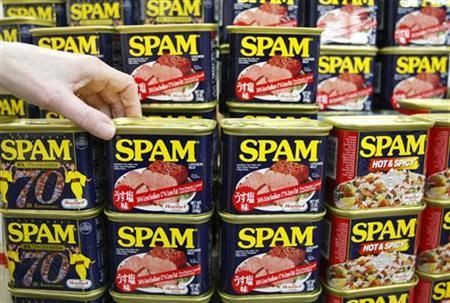Facebook Spam And YouTube Spam Rampant, Says 2013 Social Media Spam Report

Who says spammers are antisocial?
For the first half of this year, spam -- the scourge of the Internet since 1993 -- grew by 355 percent across the Internet’s most popular social networks. This is according to the 2013 “State of Social Media Spam” research report from Nexgate, a company that, not surprisingly, specializes in social media security.
Harold Nguyen, a Nexgate data scientist, authored the report, which looked at social-spam trends between 2011 and 2013. Asked why independent researchers weren’t involved in the study, a PR spokesman for the company told International Business Times that the data was compiled directly from Nexgate’s captured content, and therefore was best analyzed in-house. The company is calling its social data the “Nexgate corpus”: 60 million pieces of unique content across 25 million social media accounts.
The research team look at accounts from the most widely used social networking companies, including Facebook Inc. (NASDAQ:FB), LinkedIn Corp. (NYSE:LNKD), Google Inc. (NASDAQ:GOOG) and the privately held Twitter Inc. The team found that 1 in 21 social messages contain risky content (adult language, hate speech, etc.) and 1 in 200 social messages contain spam, including text and link-based spam.
Facebook and Google’s YouTube were the most infected, containing more spam than other social networks by a ratio of 100 to 1, according to the report. Those results will come as little surprise to anyone who has grumbled at the countless “Click Like and Share” posts that flood their newsfeeds on any given day. According to the study, Facebook also contains the largest number of phishing attacks -- schemes in which a victim’s password or credit card information is hacked.
Other common forms of social spam include text spam, which attempts to trick users through “enticing” text, such as a chain letter or an offer to make thousands of dollars working from home. The text is usually accompanied by a link to a spammer’s website, which often contains pornography or malware. And then there’s “like-jacking,” which Nexgate describes as a scheme that tricks victims in to clicking on malicious links that look like harmless buttons.

The rise in social spam isn't surprising seeing how advertisers are shifting more resources into connecting with their customers through social media. “Investment in social media advertising alone is expected to reach nearly $7 billion in 2013," Nexgate said in a statement. “As the money flows to social media, the bad guys quickly follow with Facebook spam alone generating an estimated $200 million.”
So what is a social media user to do? On Monday, the Better Business Bureau published an article identifying six ways consumers can protect themselves against social spam. For the most part, the listicle reads like Internet 101: Never reveal personal or financial information, avoid following unknown links, and report any possible spam to network administrators. The BBB put out the listicle to mark National Cyber Security Awareness Month. More information can be found on the Department of Homeland Security website.
Read Nexgate’s full report here.
Got a news tip? Send me an email. Follow me on Twitter: @christopherzara
© Copyright IBTimes 2024. All rights reserved.






















